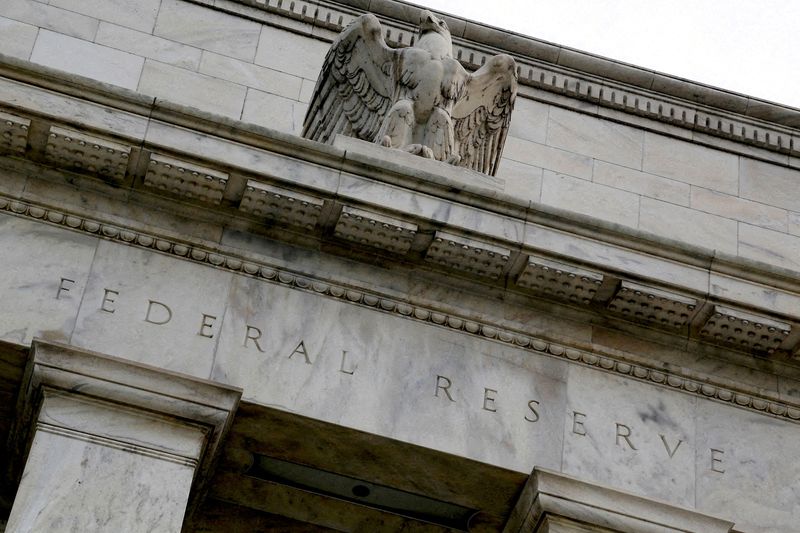NEW YORK (Reuters) - Federal Reserve emergency lending to banks in the wake of last month's financial sector troubles remains high and increased modestly in the latest week, according to data released on Thursday by the Federal Reserve.
The institution reported that borrowing via three programs aimed at supporting banks moved to $316.5 billion as of Wednesday, from $312 billion on April 12. While the overall sum remains very large and dramatically outstrips lending seen during the peak of the financial crisis, it has been easing over recent weeks after hitting a peak of $343.7 billion on March 22, in the wake of several high profile bank failures.
The lending follows the failures of Silicon Valley Bank and Signature Bank (OTC:SBNY) in March. That sparked fears of greater banking sector stress, which many in markets tied in part to the aggressive pace of Fed rate rises aimed at lowering high levels of inflation.
In the details of the data, the Fed said it extended $69.9 billion as of Wednesday via its discount window lending facility, versus $67.6 billion on April 12.
Its Bank Term Funding Program, set up last month specifically to deal with the banking sector problems, moved to $74 billion on Wednesday from $71.8 billion the prior week, while "other credit" tied to the Federal Deposit Insurance Corporation's work to wind down failed banks held steady at $172.6 billion on Wednesday.
The Fed also reported that lending via its repo facility available to foreign central banks and other official institutions also declined in the latest week, going from $30 billion on April 12 to $20 billion on Wednesday.
Collectively, the shifts in emergency lending and other factors allowed the total size of the Fed's balance sheet to go down, hitting $8.643 trillion on April 19 from $8.665 trillion on April 12.
Since last summer the Fed has been working to shrink the size of its holdings as part of its broader tightening campaign, but its emergency lending efforts over recent weeks have set that effort back, even as it has continued to shed Treasury and mortgage bonds it owns.
Fed officials have underscored for some time now that they see the troubles that have driven the surge in emergency lending as limited to a few institutions. Thus far, they have said they see no reason to be worried about the ongoing high levels of emergency lending.
"Conditions in the banking sector have stabilized, and the banking system is sound and resilient," New York Fed leader John Williams said in a speech on Wednesday evening.
Much of the emergency lending has been via the discount window, the Fed's main lender of last resort tool, a facility that has historically been shunned by banks for fear it would send out a sign of weakness to use it. The Fed has sought to erase that stigma and encourage use when needed.

Williams told reporters after his speech he's not alarmed about the level of borrowing and when asked if he expected it to decline in the future, he said that would likely be driven by market conditions. But he also said it's not a bad thing for banks to use the discount window when they need liquidity.
The discount window is "an important part of our toolkit," Williams said, and it's a "normal thing" for banks to tap it if they need it. "I hope that we won’t try to stigmatize it again by dissuading people from using it," Williams said.